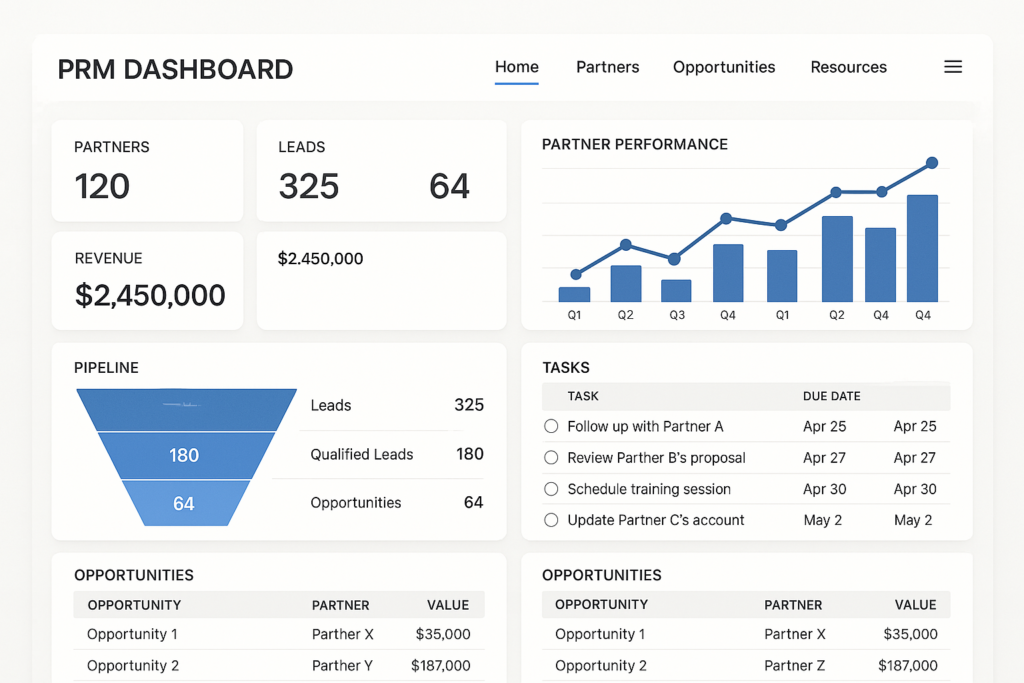
Partner marketing has rapidly evolved into a cornerstone of successful B2B marketing strategies. When executed strategically, partner marketing enables companies to amplify marketing efforts and engage new audiences by promoting their products or services through qualified partners.
If you’re considering launching or revitalizing your partner marketing program, here are some actionable tips you can implement today to scale your reach, enhance your credibility, and drive more leads.
1. Define clear goals and KPIs at the beginning
According to Foundry’s Partner Marketing survey, 68% of respondents view partner marketing as a necessary tactic that provides great value. So how is that value validated? Think of KPIs as your partnership’s GPS—they guide you to your destination.
Whether your goal is increased brand awareness, more qualified leads, or boosting revenue, defining your objectives upfront sets you up for success. Following are some KPIs to consider tracking as you evaluate financial and overall partner program success:
- Co-marketing contribution
- Time to partner revenue
- Partner-attributed revenue
- Joint sales pipeline
- Partner lifetime value
- Customer acquisition cost
- Partner activation rate
- Partner engagement
- Marketing development funds (MDF) capacity utilization rate
- Partner satisfaction/attrition/churn rate
2. Find compatible partners and invest in a long-term relationship
As I previously covered, not all partners are created equal. True compatibility goes beyond just engaging with a recognizable brand or an organization with a large audience. Instead, seek partners whose market positioning, customer base, and core values complement your own. Asking smart questions upfront can help ensure visions align, values are upheld, collaboration is effective, and there’s a common understanding of what success looks like. For example, is the partner trustworthy and proven in the market? OR what are the KPIs for success and how will they be measured?
Once engaged, successful partnerships are built on trust, communication, and mutual benefit. Avoid viewing partnerships as quick or one-off transactions. Regular communication, joint events, and transparent feedback loops nurture trust into a true partnership.
3. Enable success with co-branded resources, tools, and solutions
The most impactful partnerships involve co-creation. Think of your partners as extensions of your own marketing team. Equipping them with tailored, easy-to-use resources like co-branded content, campaign toolkits, and promotional assets ensures your message remains consistent and powerful. Note that this effort goes beyond putting company logos on existing assets or stopping by an event. Work together to truly define your joint value proposition and weave that thread throughout all campaign materials.
Whether you’re working with technology providers, systems integrators, resellers, distributors, or other partners, it’s also critical to think beyond basic marketing efforts. Invite partners to innovate with you, creating new products, services, or campaigns so that you’re truly bringing something new to the market.
4. Use tech to streamline collaboration and drive results
Leveraging technology doesn’t just simplify management, it amplifies effectiveness. From partner portals to analytics dashboards and AI-powered everything, there are numerous options to help you automate partner onboarding, training, and communication.
As part of a data-driven partner marketing approach, consider a Partner Relationship Management (PRM) system—like Impartner, Allbound, PartnerStack, or Salesforce Partner Relationship Management—to simplify partner interactions and reduce administrative burdens. Tap into real-time analytics to track partner performance, optimize resource allocation, and personalize marketing strategies effectively. Lastly, look at ways to integrate any of these solutions with existing investments in areas like customer relationship management (CRM) or marketing automation. An integrated marketing tech stack ensures seamless data flow, improves visibility into partner activities, and informs more strategic decision-making.
5. Measure and optimize performance continuously
Partnership programs are dynamic, and what works today may need tweaking tomorrow. Iterative testing and regular data-driven performance analysis against your chosen KPIs are crucial for ongoing success. Dive deep into real-time analytics dashboards and reporting tools to understand partner performance, lead quality, engagement rates, and overall ROI.
Think qualitatively too. Collect partner feedback regularly to identify bottlenecks and improvement opportunities. Remember that flexibility and agility are key as you refine the long-term partnership.

Image courtesy of OpenAI, via ChatGPT (DALL·E image generation).
Realize the power of compatibility
Effective partner marketing isn’t just about the numbers—it’s about compatibility. Take the time to clearly define your goals, choose your partners wisely, and invest genuinely in relationship building. Equip your partners, leverage technology, and continuously refine your strategy. By asking the right questions and being transparent about your objectives, you’ll build strategic and sustainable partner relationships.
Ready to kickstart your partner marketing efforts and create stronger, more productive relationships? Explore our partner marketing services to learn how we can help you effectively engage distribution, strategic IT partners, and systems integrators.



